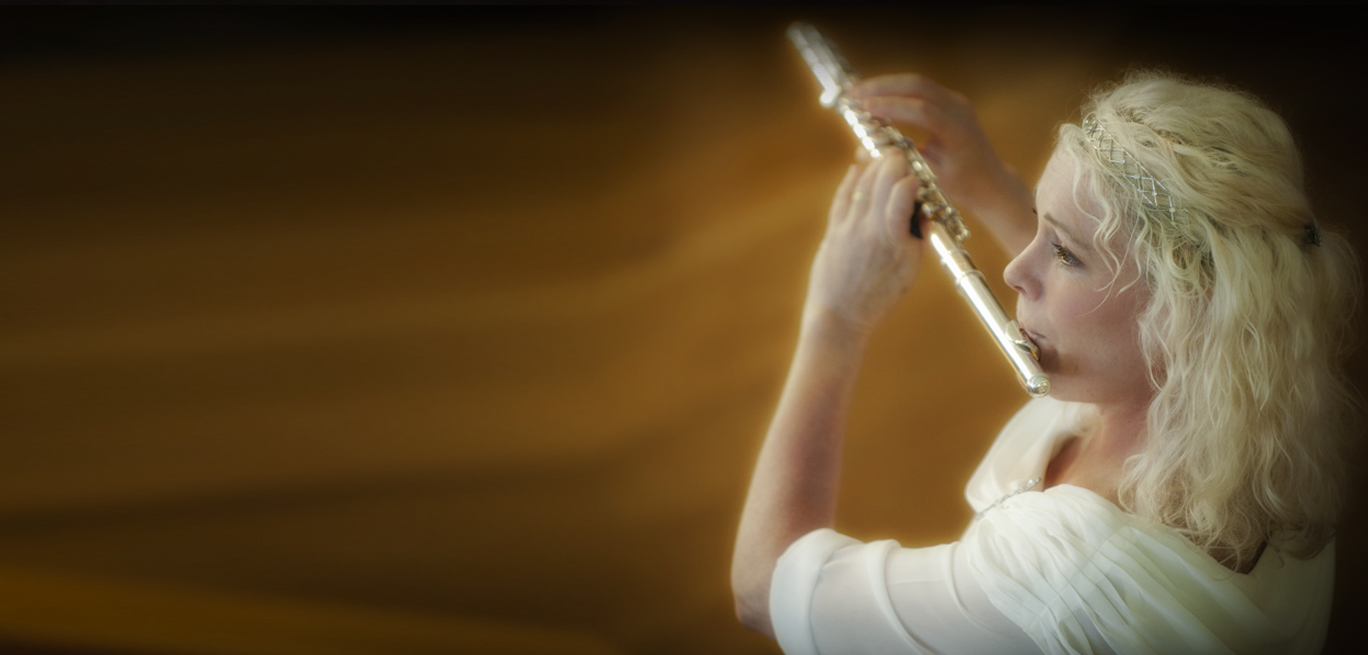Rhonda Larson’s flute playing extraordinary
BY C.J. GIANAKARIS
SPECIAL TO THE GAZETTE
KALAMAZOO GAZETTE, WEDNESDAY, AUGUST 6, 2003
SOUTH HAVEN—The audience at the Blue Star Theater Tuesday night for the final program of the Fontana Chamber Arts Summer Festival heard music that was culturally rich and flute playing that was extraordinary.
Some Fontana regulars were present, but most in the audiencewere newcomers who came to hear Grammy Award-winning flutist Rhonda Larson and her four-piece ensemble called Ventus. (The program will be repeated at 7:30 tonight at Kalamazoo College’s Dalton Theatre.)
With the Larson concert, Fontana Chamber Arts recon- firmed its intention to expand the purview of chamber music in the 21st century. Set up much like any pop or rock event of today, the concert centered its attractive featured artist in the middle of her musical backup, which included Rob Cookman (piano), Sam Smiley(guitar), Carolyn Koebel (percussion) and Thomas Knific (bass guitar). Everyone was amplified, while audio experts could be seen monitoring from sound boards in the hall.
Knific provided welcome firmness and Cookman all-around terrific general accompaniment. Koebel at times became overly boisterous in volume; Smiley, on the other hand, often could not be heard.The 21 pieces in the program were verbally announced from the stage by the charming Larson, who also engaged the audience with informative and fascinating background for each selection. Her magnetic stage presence clearly contributed to the success of the concert.
Larson’s publicity claims of being an artist concerned with universal music and culture proved entirely valid. The musical selections—many composed by Larson—by subject and style moved from America’s open-sky West (“Montana”) to Armenian folk songs, to Celtic boat music, to Islamic religious modes (“Distant Mirrors”), to Scottish reels (“Dr. MacPhails Reel”), and on and on. Along her international musical pilgrimage, Larson alternated among a standard silver flute, alto and soprano flutes, panpipes and American Indian flutes. And when the flute did not suffice, she occasionally would croon and sing.
Meanwhile, the other musicians acquitted themselves splendidly. Keyboardist Cookman was a magician with his grand piano and various electronic keyboards. For the comic pop “Zydeco” piece, he displayed his magic on an accordion, while percussionist Koebel donned a tramp’s garb and played a washboard. Knific and Smiley likewise did wonders with several solo passages allotted them.Larson’s classical artistry proved to be of superior caliber when she superbly performed “Marin Marais Variations” in a transcription from a work for 16th-century viola da gamba. Her breath control, intonation and lightning speed roused the audience into noisy approval.
Other high points included “The Gift”, “Be Still My Soul,” Maskell’s Harbor” and “Distant Mirrors” (composed to explore Islamic religious music).
For some present, the audio balance tilted toward percussion and sometimes toward keyboards, at which times Larson’s solo lines were overpowered. All the same, Rhonda Larson & Ventus offered much pleasurable music.


